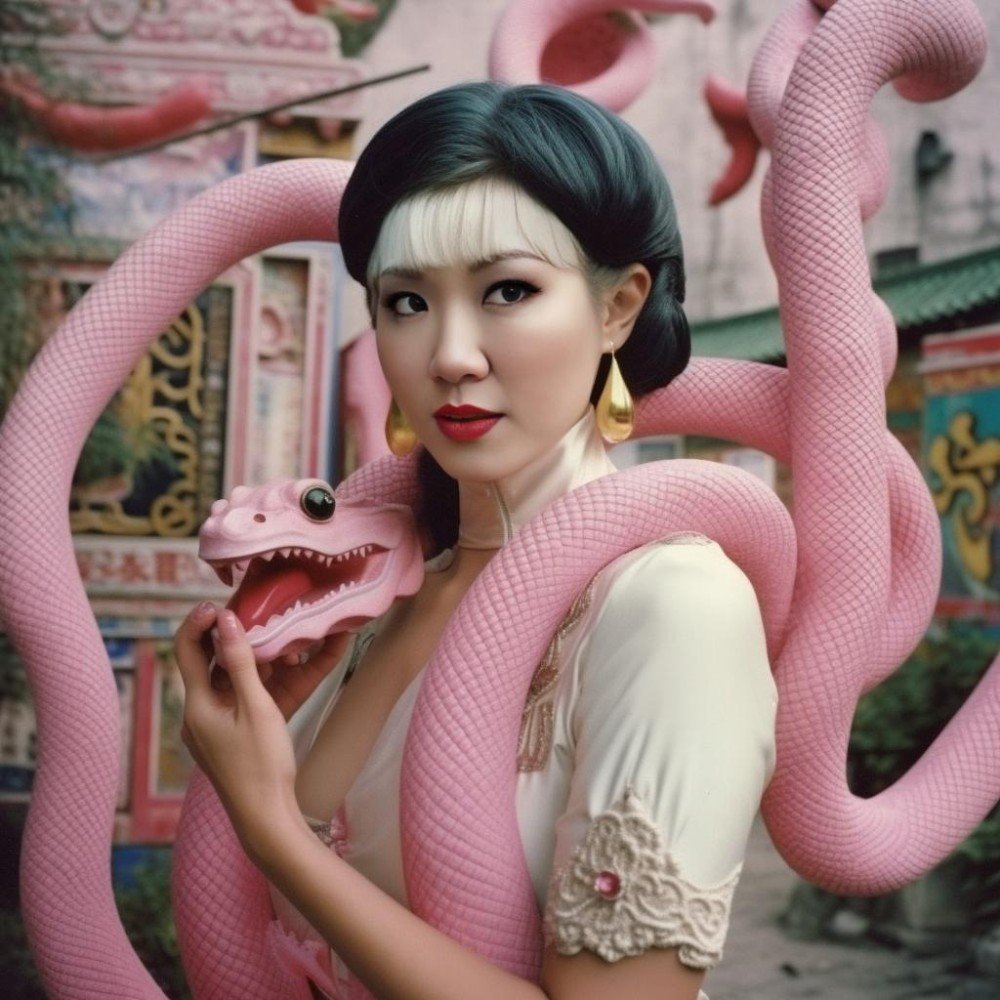Artist Bianca Tse puts a spin on the Lunar New Year with AI artwork
Artist Bianca Tse jumped onto the AI bandwagon because of FOMO (fear of missing out), and in the process, she’s become highly recognised for her unique style with Hong Kong as her centerstage. She tells Hill Choi Lee about what Artificial Intelligence (AI) art could mean for the artist of today
An AI self-portrait of artist Bianca Tse
Art director Bianca Tse recently exhibited a series of digital AI artworks at the Digital Art Fair 2023 centred around the topic of the infamous Kowloon Walled City, Hong Kong’s notorious and (reportedly the world’s) densest settlement which has been demolished since 1994. In this collection, she made references to the real history of the Walled City while adding her very own interpretation by using AI technology to construct another Kowloon Walled City in the parallel universe.
This time around Tse has created AI-generated artworks with windmills as the main theme for the upcoming Lunar New Year. The artist, with two decades of experience under her belt, always had a unique feel for ‘old Hong Kong’ and as such, the city stands as a focal point in many of her previous works.
It is no different this time around. Tse has opted for the windmill as a fixture in her latest digital artwork – an object and symbol that everyone who celebrates Chinese New Year has come across in their childhood. But the process isn’t as straightforward as one may think.
“If you only rely on AI to generate pictures using text descriptions, sometimes the results will be unreasonable,” she furthers. “For example, AI may not be able to generate a Chinese-style windmill.” This is why Tse goes out of her way to gather research and reference materials.
As with many artists, Tse is highly dependent on the right tools to help her in her quest to create high-quality digital content. In this case, the Apple ecosystem is paramount to her creative process, from the newest iPhone 15 Pro Max (which she used for her on-site shooting at Che Kung Temple) to adding those windmill photos to the Midjourney app and using the Apple Mac for post-production to create realistic element.
“I have been an art director for over 20 years,” she introduces. “When I began using AI, it was purely because of FOMO. Because when AI came out, everyone just said, ‘Okay, we don’t need designers anymore’.” Though Tse may not necessarily believe that AI will entirely take over the human elements in the creative process, she recognises that it would become a major factor in her line of work in the long run and understands the need to constantly remain in the game by staying ahead of the curve.
“I’m still an independent designer who takes a job on a project-to-project basis, or works just by myself,” she says. By incorporating AI in her workflow, she isn’t diminishing her own role in the process. “The difference I noticed in advertising design work is that in the past – traditionally – we would lock ourselves away with three or four people in a team to get the job done. We don’t sleep. We brainstorm for hours until we get something out. Nowadays, you break down your ideas with robots. Using them, it speeds up the process but the creative thinking is still there, including a lot of decision-making and things you actual create.”
However, since Tse is a freelance designer, the amount of time she spent by herself to conjure up the next design idea is not entirely different from working alone alongside AI right now. In a sense, she’s gained a comrade. “With robots, together we can generate something even more fun. AI generates more creative ideas. It condenses information much faster and reduces time and costs.”
“Let’s say I create the visuals traditionally by taking photos and using Photoshop to make them all come together. I will then need a lot of people who can do CG, acting and create videos. With AI, I can do everything in one day if I have a good idea.”
It all sounds good and well, and there are plenty of people who fear that machines will take over the human creative process. Tse doesn’t believe this will happen. At most, it may cause an evolution as to the role of artists.
“Back when cameras were first introduced in 1816, many portrait painters were worried about losing their jobs,” Tse finalises. “Some of them did end up losing work, but others found new artistic styles to explore. Interestingly, photography, which was seen as a new technology at the time, eventually became a recognised form of art.”
“Art is always changing with advancements in technology. Something that starts as a ‘technology’ can later become a tool for creating art. Al has the power to eliminate certain human roles while also creating new ones. Personally, I believe that Al has the potential to enhance creativity.”
Original article published on Hashtag Legend (Feb 9, 2024)


